Northern Vietnam, a land of contrasts and traditions, is home to a mosaic of ethnicities whose diversity is beautifully reflected in their culinary heritage. Each community, from the Hmong to the Tay and the Dao, contributes its unique touch to the region's gastronomy, creating a varied and captivating taste landscape. This culinary richness is not just about taste; it is a reflection of a history, a culture, and a way of life deeply rooted in the mountains and valleys of this fascinating region.
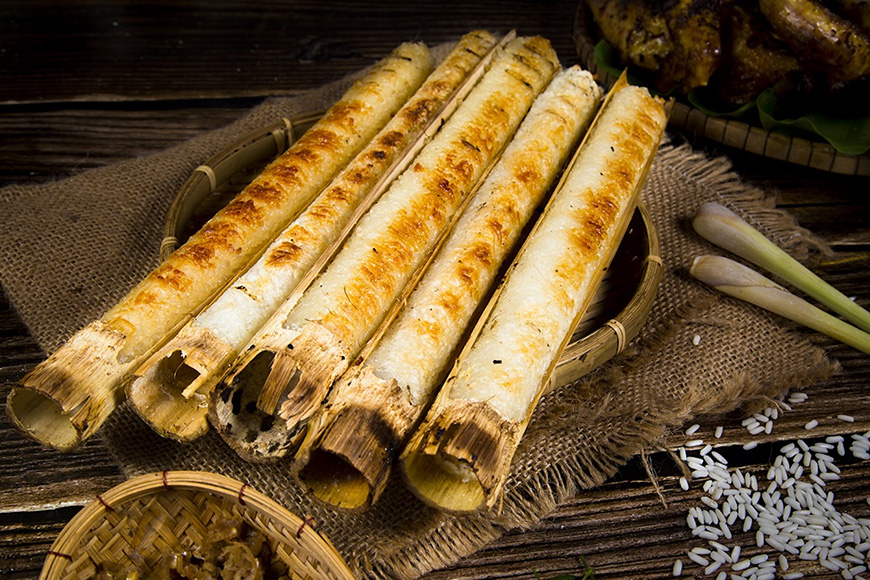
Cơm lam, rice cooked in bamboo - Source : Collected
Harmony with Nature
At the heart of this culinary richness lies a deep respect for the land and its resources. The ethnicities of the North have cultivated close ties with their environment, drawing from the generosity of nature to create dishes that tell the story of their mountains, forests, and age-old traditions. This approach is evident in the use of local ingredients, often harvested or grown in the immediate vicinity of the villages.
Wild herbs, like lemongrass and Thai basil, play a crucial role in Hmong cuisine, bringing freshness and complexity to the dishes. The Dao excel in the art of transforming tender bamboo shoots into culinary delights, highlighting the symbiosis between humans and their environment.
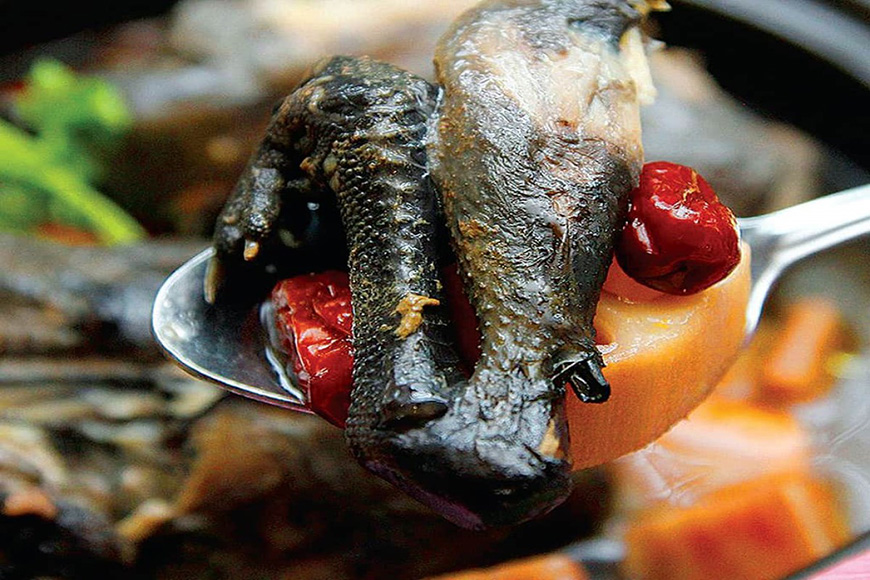
Gà đen H'Mông," or H'Mong black chicken - Source : Collected
Hmong Cuisine: Robust and Generous
Take the H'mong, for example. Their cuisine, marked by the ruggedness of the highlands, celebrates corn, a staple of their diet. The "Mèn Mén," a true culinary emblem, turns this humble cereal into a hearty feast, perfect for facing the rigors of the mountain climate. The preparation of this dish is an art in itself: corn is ground into flour, then kneaded and carefully cooked, creating a unique texture that captures the very essence of Hmong cuisine.
Even more daring, "Thang Co" embodies the spirit of sharing and community cherished by the Hmong people. This dish, traditionally prepared with horse meat but also made with beef or goat, is more than just a meal. It is a celebration of community life, where a simple pot and a shared bottle of alcohol are enough to create unforgettable moments of conviviality.
The "Gà đen H'Mông," or H'Mong black chicken, holds a special place in the culinary traditions of this ethnicity. Raised freely in the mountains, this chicken with firm flesh and crispy skin is more than just a dish. It is laden with symbolism, especially during the New Year, where it is associated with the awakening of the sun god, marking the transition to a new year full of hope and light.
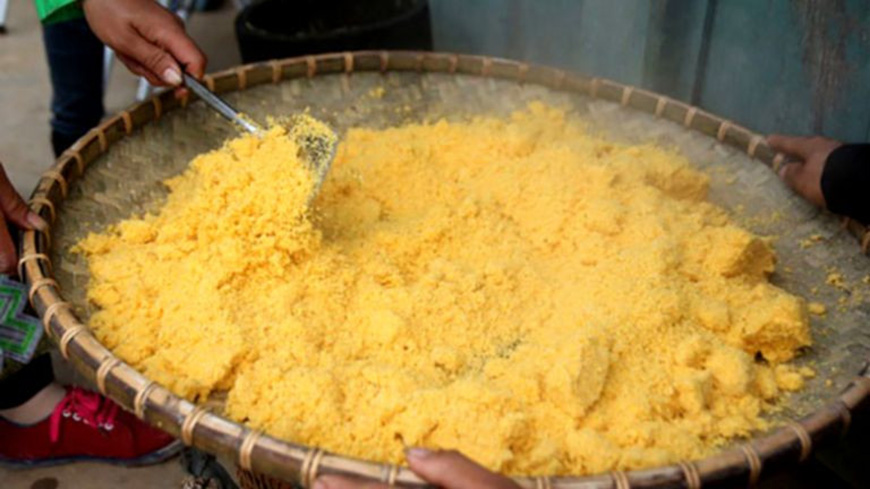
Mèn Mén, a true culinary emblem of Hmong's Cuisine - Source : Internet
The Subtlety of Dao Cuisine
The Dao favor a more subtle approach, allowing the freshness of their ingredients to shine. Their "Cơm lam," rice cooked in bamboo, is a poignant testament to their harmony with nature. This ancestral cooking method not only preserves the nutrients of the rice but also gives it a unique, slightly smoky aroma that instantly evokes the misty forests of Northern Vietnam.
The "Xôi Ngũ Sắc," or glutinous rice with five colors, is not only a delight for the taste buds but also for the eyes. Each color, naturally obtained from ingredients like pandan leaves or various flowers, symbolizes one of the five elements. This dish embodies the Dao philosophy of balance and harmony, offering a unique gustatory experience.
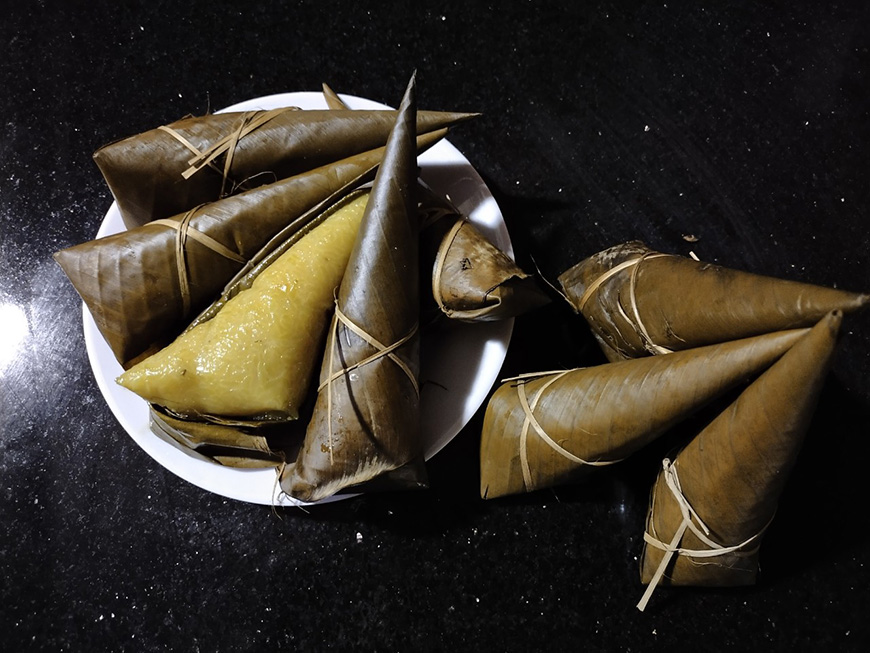
Bánh Cooc Mò, with its evocative shape of a buffalo horn - Source : Collected
Tay Culinary Traditions
For the Tay, cuisine is a ritual. The "Bánh gio," rice cake with ashes, is not just a dish but an offering to the ancestors, a bridge between the earthly and the divine. Its preparation, which involves the use of finely sifted ashes, is a long and meticulous process that reflects the Tay's deep respect for their ancestral traditions.
The "Bánh Cooc Mò," with its evocative shape of a buffalo horn (Mò means buffalo horn in Tay language), carries within it wishes of health and prosperity for the young. Traditionally prepared for a child's first birthday, this cake symbolizes parents' hopes and aspirations for their offspring. Its delicate texture and subtle taste make it a favorite far beyond family celebrations.
The "Xôi trứng kiến," or glutinous rice with ant eggs, is a fascinating specialty of the Tay from Mu Cang Chai. This dish, available only for a short period in spring, perfectly illustrates the Northern ethnicities' ability to make the most of seasonal resources in their environment. The combination of sticky rice with tender ant eggs creates a unique explosion of flavors, enhanced by the addition of fragrant cumin and chicken fat.
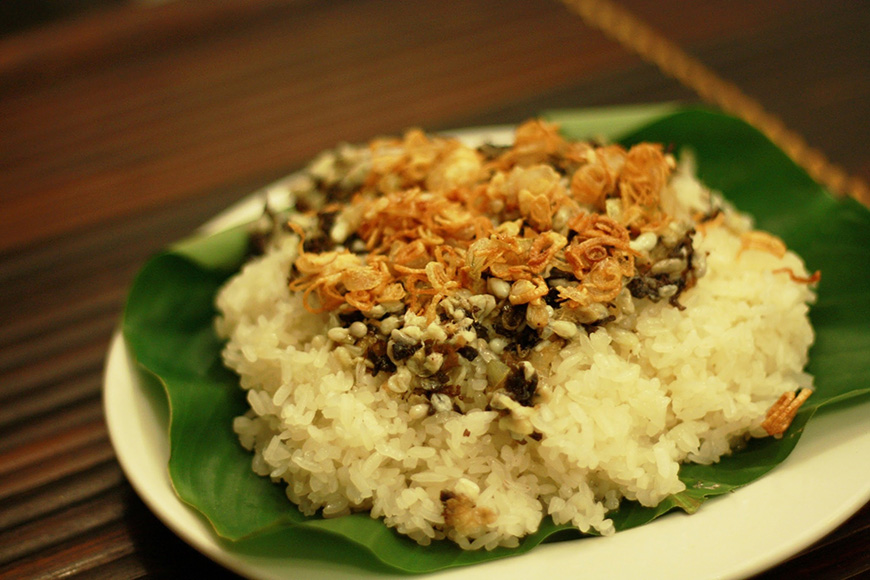
Xôi trứng kiến, a cake made of glutinous rice with ant eggs - Source : Collected
The Influence of Climate and Seasons
The cooler climate of Northern Vietnam plays a crucial role in defining its cuisine. Unlike the spicier dishes of the South, Northern cuisine favors milder and subtler flavors, with more frequent use of black pepper than chilies. This preference not only reflects the locally available ingredients but also a lifestyle that values long, convivial meals, perfect for the cool evenings in the mountains.
Seasons also dictate the rhythm of cuisine. Festivals and celebrations are often an opportunity to prepare special dishes, such as "Bánh chưng" during Tết. This glutinous rice cake, wrapped in dong leaves and cooked for hours, is a powerful symbol of family and harmony, bringing generations together around its preparation and enjoyment.
The Richness of Culinary Techniques
Food preparation methods in Northern Vietnam are as diverse as they are fascinating. The "Pa pỉnh tộp," a traditional Thai dish, perfectly illustrates the importance of slow cooking and smoky flavors in the region's culinary culture. The fish, carefully wrapped in banana leaves and slowly cooked over a charcoal fire, absorbs the subtle aromas of the leaves while remaining incredibly tender.
The creative use of less conventional ingredients, as seen in "Nậm pịa," showcases the ingenuity of Northern ethnicities in the face of food challenges. This "nose-to-tail" approach not only reduces waste but also creates unique and flavorful dishes that capture the essence of survival cuisine transformed into culinary art.
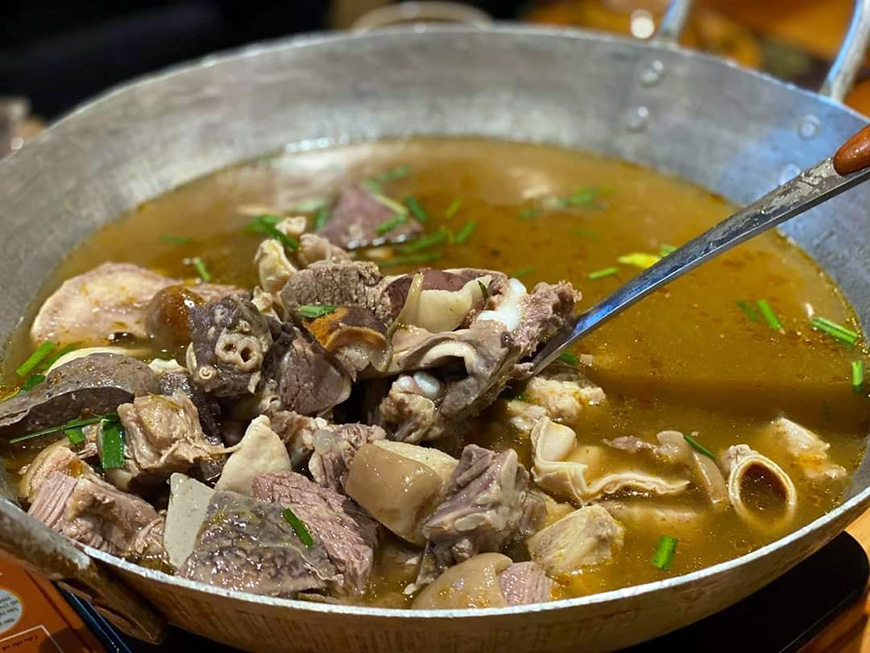
Thang Co, one of the most emblematic dishes of the mountain ethnic groups - Source : Internet
A living heritage
This symphony of flavors would not be complete without mentioning the contributions of the Thai and Muong peoples, whose fragrant soups and glutinous rice preparations add their own unique notes to this concert of flavors. Each ethnic group contributes its stone to the culinary edifice of North Vietnam, creating an incomparably rich tapestry of flavors.
Beyond mere sustenance, the cuisine of North Vietnam is an open book on the souls of its peoples. Each dish tells a story, perpetuates a tradition and strengthens community ties. From colorful markets to family tables, these specialties are much more than just food; they are the guardians of a living heritage, handed down from generation to generation.
So, to explore the cuisine of North Vietnam is to embark on a fascinating journey to the heart of millennia-old cultures, where every mouthful is a celebration of diversity and human ingenuity in the face of nature's challenges. It's about discovering how, through their culinary practices, these communities have managed to preserve their identity while adapting to an ever-changing world. The table, in these northern mountains, is not just a place to eat; it's a place to meet, share and pass on, where past and present mingle in a savory dance that continues to delight palates and nourish souls.
Tour ideas for tasty discoveries